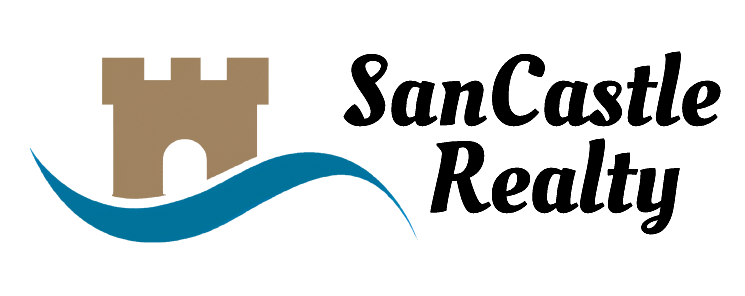sancastle realty's Blog
Our Blog Articles

Impact of Natural Disasters on Rental Investments: How to Protect Your Property and Investment
Introduction
Investing in rental properties can be highly lucrative, but it comes with risks, including the possibility of natural disasters. Hurricanes, floods, wildfires, and other natural events can cause significant damage to your rental property, disrupt rental income, and affect the overall profitability of your investment. For landlords and real estate investors, it’s crucial to understand how to mitigate these risks and protect your properties from the financial impact of natural disasters.
In this guide, we’ll explore the impact of natural disasters on rental investments, strategies to safeguard your property, and ways to minimize financial losses through insurance and disaster preparedness.
Common Natural Disasters Affecting Rental Properties in Florida
Florida is particularly vulnerable to certain types of natural disasters, and rental property owners need to be aware of these risks.
1. Hurricanes
Florida is located in a hurricane-prone region, and each hurricane season (June to November) brings the risk of severe storms. Hurricanes can cause damage to roofs, windows, and structures, as well as flooding and wind-related destruction.
2. Flooding
Flooding is a significant risk, especially for rental properties near coastal areas or in low-lying regions. Heavy rainfall, storm surges, and overflowing rivers can all lead to extensive property damage, often affecting foundations, walls, and flooring.
3. Tornadoes
Although tornadoes are less frequent in Florida compared to other areas, they do occur, particularly during thunderstorms and hurricanes. Tornadoes can cause widespread damage, tearing off roofs, uprooting trees, and damaging homes.
4. Sinkholes
Florida’s unique geology makes it more susceptible to sinkholes than most other states. Sinkholes can cause structural damage to properties, often requiring costly repairs or even leading to property abandonment.
Understanding the types of natural disasters that can affect your rental property is the first step in protecting your investment.
How Natural Disasters Impact Rental Investments
1. Property Damage
The most immediate impact of a natural disaster is property damage, which can range from minor issues like broken windows to major structural damage that renders the property uninhabitable. This can lead to costly repairs or even a complete loss of the property.
2. Income Disruption
When rental properties are damaged, tenants may need to relocate temporarily or permanently, leading to loss of rental income. This disruption can be particularly challenging for landlords who rely on rental income to cover mortgage payments, taxes, and other expenses.
3. Higher Insurance Premiums
Owning property in a disaster-prone area often leads to higher insurance premiums, particularly for flood or hurricane coverage. While insurance is essential, rising premiums can reduce overall profitability.
4. Depreciation in Property Value
Significant property damage or the repeated threat of natural disasters can lead to a depreciation in property value, making it more difficult to sell the property or secure favorable financing terms.
Learn More: Cost of Maintenance and Repairs for Rentals
Protecting Your Rental Property from Natural Disasters
While natural disasters cannot be prevented, there are several strategies you can use to protect your rental property and mitigate the damage caused by these events.
1. Invest in Comprehensive Insurance Coverage
Having the right insurance coverage is the most critical step in protecting your rental investment. Standard homeowner’s insurance may not cover all types of natural disasters, so it's essential to explore additional coverage options.
Flood Insurance: If your property is located in a flood zone, consider purchasing flood insurance through the National Flood Insurance Program (NFIP). Many standard policies don’t cover flood damage, so this is an essential add-on.
Hurricane and Windstorm Insurance: In hurricane-prone areas, ensure your policy covers windstorm damage. You may need to purchase a separate hurricane deductible policy, which typically kicks in for named storms.
Sinkhole Coverage: In areas prone to sinkholes, adding sinkhole insurance is vital to protect your property from costly structural damage.
Be sure to review your insurance policies annually and adjust coverage as needed based on your property’s location and the likelihood of specific natural disasters.
2. Reinforce Property Structure
Taking preventive measures to fortify your property can reduce damage caused by natural disasters. Implementing upgrades and structural improvements can protect your investment and ensure tenant safety.
Hurricane-Resistant Windows and Doors: Install impact-resistant windows and reinforced doors to prevent damage from flying debris during hurricanes and strong storms.
Roof Reinforcement: Upgrade your roof with hurricane clips or roof straps to secure it against strong winds. Consider replacing older roofs with wind-resistant materials.
Flood-Proofing: Raise electrical outlets and utilities above flood levels and install flood barriers or sump pumps to prevent water from entering the property.
Landscaping Adjustments: Trim large trees and remove loose outdoor items that could become projectiles during storms.
By making these upgrades, you can significantly reduce the risk of severe damage to your property during natural disasters.
3. Disaster Preparedness for Tenants
As a landlord, you should encourage your tenants to be prepared for natural disasters. Having a plan in place ensures tenant safety and can reduce the potential for damage to the property.
Tenant Communication: Provide tenants with a clear disaster preparedness plan, including evacuation routes, emergency contacts, and instructions for securing the property before a storm.
Emergency Kits: Encourage tenants to have emergency kits stocked with essentials such as water, non-perishable food, flashlights, and first aid supplies.
Storm Shutters and Supplies: If your property is in a hurricane zone, consider providing storm shutters or materials to cover windows in the event of a storm.
Helping tenants prepare for natural disasters not only protects them but also minimizes potential damage to the property.
Recovering from a Natural Disaster
If your rental property is affected by a natural disaster, it's essential to know how to recover quickly and minimize financial losses.
1. File Insurance Claims Promptly
As soon as it’s safe, assess the damage to your property and file an insurance claim immediately. Document the damage with photos and videos, and keep receipts for any temporary repairs you make.
Hire a Professional: Consider hiring a public adjuster to help navigate the claims process and ensure you receive the maximum payout from your insurance provider.
2. Work with Contractors for Repairs
After a natural disaster, demand for contractors can skyrocket. Establish relationships with reliable contractors before disaster strikes so you can access help quickly when needed.
Get Multiple Bids: Before proceeding with repairs, obtain several bids to ensure you’re getting the best price.
Prioritize Essential Repairs: Focus on critical repairs that affect the safety and habitability of the property first, such as structural damage, electrical repairs, or roof leaks.
Financial Assistance for Disaster Recovery
In the event of a disaster, landlords may be eligible for financial assistance from government programs and relief organizations.
1. FEMA Assistance
The Federal Emergency Management Agency (FEMA) offers disaster assistance to property owners affected by federally declared disasters. Landlords may be eligible for grants or loans to repair damaged properties.
2. SBA Disaster Loans
The Small Business Administration (SBA) provides low-interest disaster loans to property owners for repairing or replacing disaster-damaged property. These loans can help cover repair costs not fully covered by insurance.
3. Tax Relief
After a natural disaster, you may be eligible for tax relief by claiming a casualty loss deduction on your taxes. This deduction allows you to deduct the cost of property damage that wasn’t reimbursed by insurance.
Learn More: Tax Benefits of Rental Property Investments
Conclusion
While natural disasters pose a significant risk to rental investments, taking the proper steps to protect your property and tenants can minimize financial losses and ensure a faster recovery. By investing in comprehensive insurance, reinforcing your property, and preparing for potential disasters, you can safeguard your rental property and continue generating income even in the face of unexpected events.
At Sancastle Realty, we help real estate investors protect their rental properties from natural disasters and other risks. Whether you need guidance on disaster preparedness or help navigating insurance claims, our team is here to support you. Contact Sancastle Realty today to learn more about how we can protect your investment.


